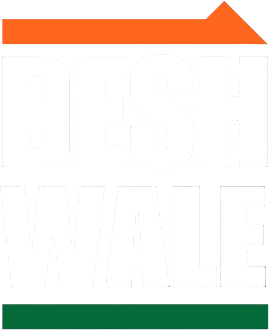Hindi, one of the most widely spoken languages in the world, holds a significant place in India’s linguistic and cultural landscape. With over 600 million speakers, Hindi is not just a language but a symbol of national identity and historical evolution. From its roots in Sanskrit and Prakritto its status as the official language of India, Hindi has undergone remarkable transformations.
Origins and Linguistic Development
The Hindi language traces its origins to Shauraseni Apabhramsha, a dialect of Middle Indo-Aryan languagesspoken in North India during the first millennium CE. Over centuries, this Apabhramsha gradually developed into early Hindi dialects, gaining influence from Persian, Arabic, and Turkishdue to the Delhi Sultanate and Mughal rule. The adoption of Persian administrative vocabulary during this period contributed to the formation of Hindustani, a broad linguistic category encompassing both Hindi and Urdu.
By the 19th century, with British colonial rule, the modern standardization of Hindi began. Scholars and writers emphasized Sanskrit-based Hindi, which led to the formalization of Devanagari scriptas its writing system. The move to distinguish Hindi from Urdu, which incorporated more Persian and Arabic elements, intensified, especially during the Indian independence movement.
Grammar, Structure, and Linguistic Features
Hindi follows a subject-object-verb (SOV) structure, common in Indo-Aryan languages. It incorporates postpositionsinstead of prepositions and has gendered nouns(masculine and feminine) with verb conjugations that align with gender and formality. While Hindi’s grammar is heavily influenced by Sanskrit, its vocabulary reflects a blend of Sanskrit, Persian, Arabic, and Englishdue to historical and colonial influences.
The Hindi lexicon is divided into:
- Tatsama(directly borrowed from Sanskrit, e.g., विद्यालय for “school”).
- Tadbhava(derived from Sanskrit, e.g., सिखना from शिक्ष).
- Perso-Arabic Loanwords(e.g., किताब for “book,” borrowed from Arabic).
- English Borrowings(e.g., डॉक्टर, रेलवे, मोबाइल).
Hindi Literature and Cultural Influence
Hindi literature has flourished across various historical periods. Bhakti-era poetslike Kabir, Tulsidas, and Surdasused Hindi for devotional poetry. The modern literary movementsaw writers like Munshi Premchand, Harivansh Rai Bachchan, and Mahadevi Verma, who redefined Hindi prose and poetry.
In contemporary times, Hindi has gained dominance in media, cinema, and literature. Bollywood, India’s massive film industry, has popularized Hindi globally. Digital platforms have further expanded its influence, making Hindi an important medium in news, entertainment, and online education.
Contemporary Status and Challenges
Hindi is recognized as India’s official language (along with English)and is widely spoken across North and Central India. However, despite its widespread use, Hindi faces challenges from regional languagesand the increasing preference for English in urban education and employment sectors. While efforts are being made to promote Hindi through education and digital platforms, linguistic diversity remains a critical aspect of India’s cultural fabric.
Hindi’s journey from an ancient Indo-Aryan dialect to a global language reflects its resilience and adaptability. As India’s most widely spoken language, Hindi continues to evolve, blending tradition with modernity. Whether through literature, cinema, or digital platforms, Hindi remains a powerful linguistic force, shaping India’s cultural and national identity.
The Marathi Language: A Legacy of Heritage, Evolution, and Cultural Identity
Marathi, the official language of Maharashtra, is a cornerstone of India’s linguistic heritage. With over 83 million speakers, Marathi is India’s third most spoken language, deeply rooted in Sanskrit and Maharashtri Prakrit. From its ancient inscriptions to its rich literary tradition, Marathi has played a vital role in shaping Maharashtra’s identity.
Historical Evolution and Linguistic Roots
Marathi evolved from Maharashtri Prakrit, which was widely spoken across western and central India over 2,000 years ago. The earliest known Marathi inscriptions date back to the 8th century CE, found in the copper plates of the Rashtrakuta dynasty. By the 13th century, Marathi had emerged as a fully developed language, largely due to the works of Sant Dnyaneshwar, whose “Dnyaneshwari” remains a linguistic and philosophical masterpiece.
During the rule of the Maratha Empire, Marathi gained administrative importance. The Modi script, a cursive script used for official documentation, became widespread. However, with British colonial rule, Devanagari scriptreplaced Modi, solidifying Marathi’s modern written form.
Grammar, Phonetics, and Unique Features
Marathi shares a subject-object-verb (SOV) structurewith other Indo-Aryan languages but has several unique grammatical features:
- It has three genders (masculine, feminine, and neuter), unlike Hindi, which only has two.
- Marathi retains the retroflex lateral sound “ळ”, a feature absent in most other Indian languages.
- Sentence formation in Marathi uses suffixes instead of postpositions, such as “साठी” (for) instead of Hindi’s “के लिए”.
- It borrows vocabulary from Sanskrit, Persian, Arabic, Portuguese, and English, reflecting Maharashtra’s diverse historical influences.
Marathi Literature and Cultural Influence
Marathi has a rich literary heritage, deeply influenced by Bhakti saintslike Tukaram, Namdev, and Eknath, who made spiritual teachings accessible to the masses. The Peshwa periodsaw the rise of historical and administrative texts, while modern Marathi literature flourished through P.L. Deshpande, V.S. Khandekar, and Balchandra Nemade, whose works explored humor, realism, and social issues.
Marathi theatre and cinema have been pioneers in regional storytelling, with directors like Dadasaheb Phalke and Nagraj Manjulegaining international recognition. Today, Marathi literature continues to thrive through digital platforms, blogs, and online publications.
Contemporary Status and Challenges
As Maharashtra’s official language, Marathi is used in governance, education, and media. However, its prominence faces challenges from the increasing use of Hindi and English, particularly in urban areas. While Marathi is compulsory in schools across Maharashtra, its informal usage is declining among younger generations who lean toward bilingualism. Efforts such as Marathi-language content on OTT platforms and social media campaignsaim to sustain its relevance in the digital age.
Marathi stands as a testament to India’s linguistic diversity and cultural richness. From its historical evolution to its modern digital presence, Marathi continues to shape Maharashtra’s identity. As the language navigates the challenges of globalization, preserving its literary and linguistic heritage remains crucial for future generations.


